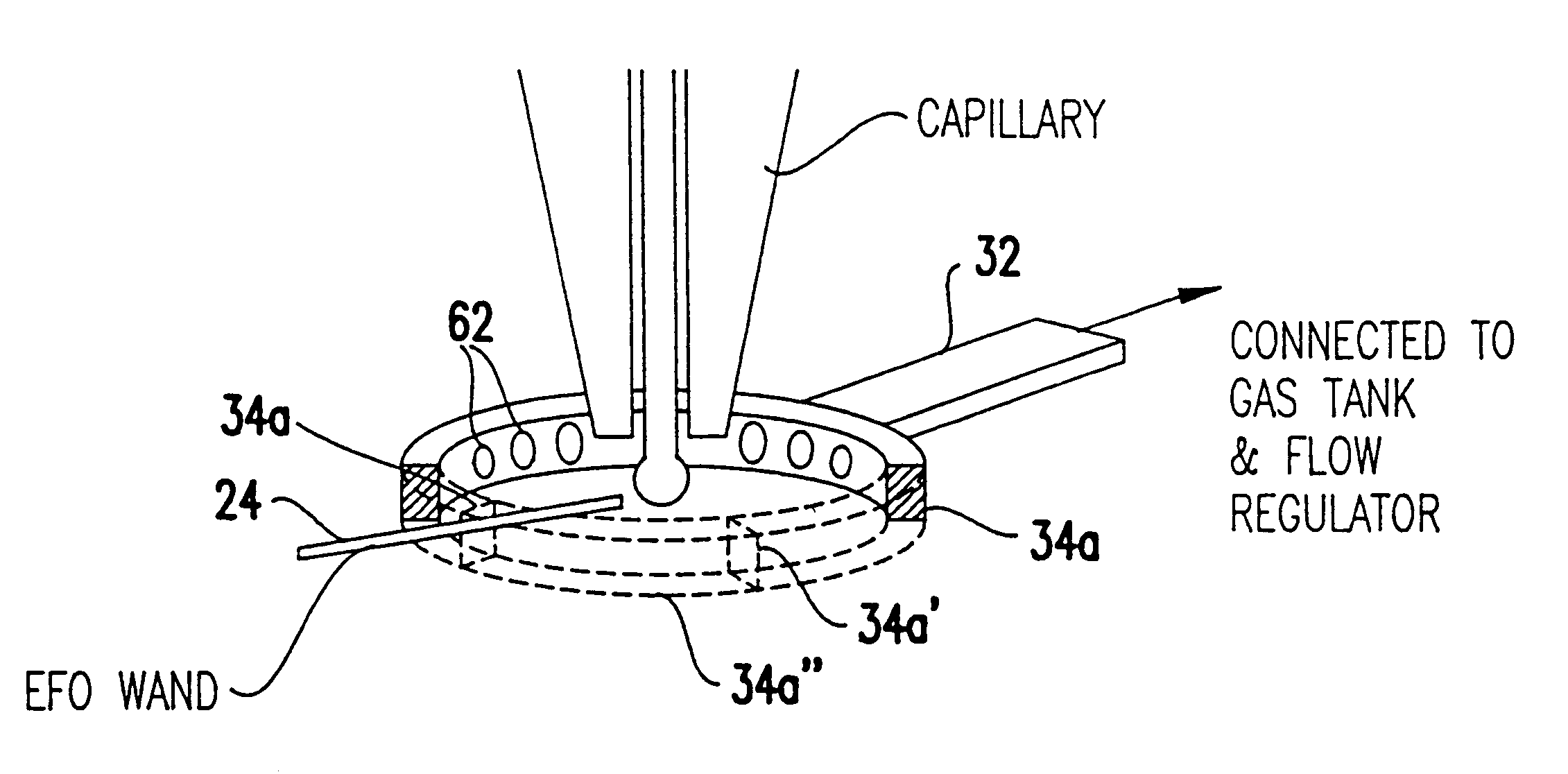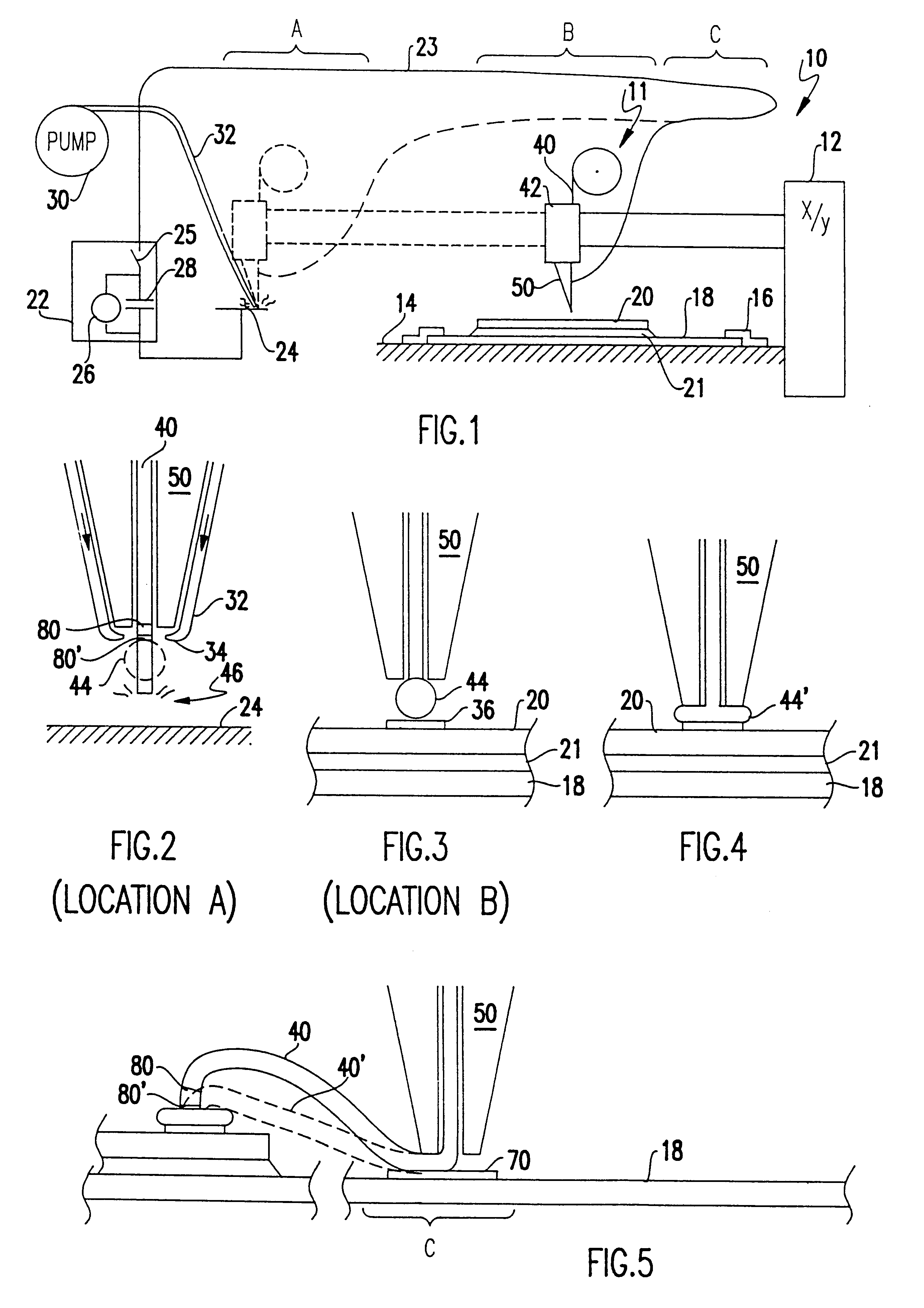Control of size and heat affected zone for fine pitch wire bonding
a fine pitch wire bonding and control technology, applied in the field of wire bonding, can solve the problems of inability to tolerate either soldering or welding, slow process, and substantial temperature excursions in the process, and achieve the effect of economic impracticality, and reducing the cost of production
- Summary
- Abstract
- Description
- Claims
- Application Information
AI Technical Summary
Benefits of technology
Problems solved by technology
Method used
Image
Examples
Embodiment Construction
Referring now to the drawings, and more particularly to FIG. 1, there is schematically shown an apparatus 10 for performing thermosonic bonding in accordance with the invention, particular steps of which are illustrated in enlarged form in FIGS. 2-5. It is to be understood that wire bonding is generally done with gold wire which is to be bonded to gold pads. In such a case, since gold does not oxidize, no enclosure for providing any particular atmosphere is required and none is shown in FIG. 1 in the interest of clarity. If other materials such as copper or aluminum are to be bonded, it is preferred to carry out wire bonding in an oxygen-free atmosphere such as nitrogen or argon gas and to provide a suitable enclosure to contain the gas. For example, since argon gas is heavier than air, a simple barrier to form a cup-shaped enclosure is adequate.
The apparatus 10 includes a bonding head 11, a transport mechanism 12 for moving the head relative to a conductive structure 24 at location...
PUM
| Property | Measurement | Unit |
|---|---|---|
| diameter | aaaaa | aaaaa |
| diameter | aaaaa | aaaaa |
| diameter | aaaaa | aaaaa |
Abstract
Description
Claims
Application Information
 Login to View More
Login to View More - R&D
- Intellectual Property
- Life Sciences
- Materials
- Tech Scout
- Unparalleled Data Quality
- Higher Quality Content
- 60% Fewer Hallucinations
Browse by: Latest US Patents, China's latest patents, Technical Efficacy Thesaurus, Application Domain, Technology Topic, Popular Technical Reports.
© 2025 PatSnap. All rights reserved.Legal|Privacy policy|Modern Slavery Act Transparency Statement|Sitemap|About US| Contact US: help@patsnap.com



